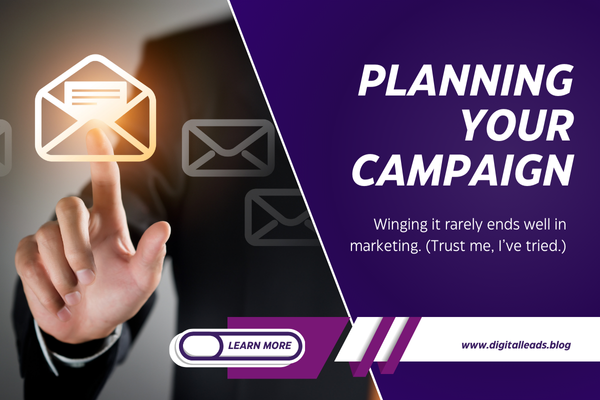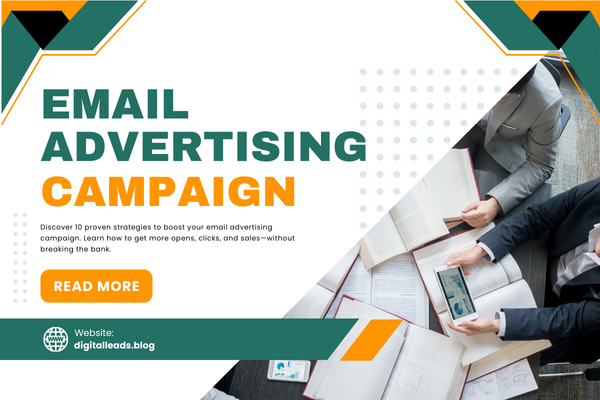Table of Contents
Introduction
If you’re running a business or trying to grow anything online, you’ve probably heard this a thousand times: “You need to build an email list.” And yeah, it kinda sounds like outdated advice, right? Like something marketers said back in 2008 while writing newsletters from their basement offices. But guess what? It still works—like, shockingly well.
An email advertising campaign is basically your golden ticket to someone’s inbox. It’s a focused effort to send promotional content—like offers, updates, or event invites—to people who (hopefully) want to hear from you. And here’s the kicker: it’s direct, personal, and crazy cost-effective.
Think about this—HubSpot says email marketing gives you an average of $42 return for every $1 you spend. That’s not pocket change. Honestly, I’ve tested a bunch of channels: paid ads, organic social, SMS—you name it. But email still wins when it comes to ROI and long-term engagement. If you’re not running an email advertising campaign by now, you’re probably leaving a whole lot of money on the table.
Understanding Email Advertising Campaigns
Let’s clear up a thing real quick—email advertising isn’t exactly the same as email marketing. I know, sounds like nitpicking, but stay with me.
- Email marketing is the broader term. It includes everything from onboarding sequences to newsletters to transactional messages.
- Email advertising, on the other hand, leans more toward the promotional side of things—selling, announcing, hyping stuff up. In short, when you launch an email advertising campaign, you’re laser-focused on getting some type of action, fast.
Types of Email Ads
Here are a few flavors of email ads you might bump into:
- Newsletter Sponsorships: Like getting your product featured in someone else’s newsletter. Kinda like digital word-of-mouth.
- Promotional Emails: “Flash Sale Ends Tonight!” Yeah, those.
- Transactional Emails with a Twist: Think receipts or order updates that sneak in a discount code or product rec. Smart, right?
Why Even Bother?
It depends on your goals:
- Wanna drive sales? Email can nudge folks at just the right moment.
- Trying to generate leads? Use forms and freebies.
- Just wanna build awareness? Stay top-of-mind with regular value-packed emails.
Bottom line? A good email advertising campaign can do all that and more—without draining your budget.

Planning Your Campaign
Winging it rarely ends well in marketing. (Trust me, I’ve tried.)
- Define Your Campaign Goals
Before you even think about writing that catchy subject line, ask yourself: What do I want people to do?
Maybe you want:
- More sign-ups for your webinar
- To move unsold inventory
- Traffic to your newest blog post (btw, Digital Leads Blog is worth checking out!)
Be super specific. Vague goals lead to vague results. And a clear goal is the foundation of every successful email advertising campaign.
- Know Your Audience
You can’t write a good email to “everyone.” You’ve got to understand who you’re talking to and why they should care.
Segment your list like this:
- By Behavior: Clicks, past purchases, abandoned carts.
- By Demographics: Location, job title, age, etc.
Also, build a simple customer persona. Imagine you’re emailing just one person. What do they want? What’s bugging them?
Crafting a Compelling Email
Alright, time to get to the fun (and sometimes frustrating) part.
- Writing Click-Worthy Subject Lines
Your subject line is the gatekeeper. If it’s boring, your email might as well not exist.
Try this:
- Use urgency: “Only 2 Spots Left!”
- Get personal: “Hey Jess, your cart misses you.”
- Be weird (but relevant): “We have a small confession…”
Oh, and keep it short. Under 50 characters is usually the sweet spot.
When writing for an email advertising campaign, this is where magic can happen—or flop.
- Email Body Best Practices
Here’s where many emails go to die: the body.
- Keep it tight: No one wants to read a novel.
- Use short sentences and white space. Make it skimmable.
- One clear CTA: Don’t confuse people with ten buttons. You get one. Maybe two. Max.
You might say something like: “This Friday only: get 25% off your order. No code needed. [Grab It Now]”
- Visual Design & Layout
A plain-text email can work wonders, but if you’re using design, make sure it’s:
- Mobile-friendly: Most people are reading on their phones while eating cereal or waiting in line.
- Balanced: Use images, but don’t go overboard. A giant image with no text? Bad idea.
The design of your email advertising campaign should support your message—not compete with it.
Choosing the Right Tools
Now, let’s talk gear. You need the right tools in your marketing backpack.
- Email Marketing Platforms
Some solid picks:
- Mailchimp: Super user-friendly. Great for small businesses.
- Klaviyo: Best for eCommerce. Integrates well with Shopify.
- ActiveCampaign: If automation is your jam, this one’s powerful.
- A/B Testing Tools
Test everything—subject lines, send times, CTA wording. I once boosted open rates by 20% just by changing “Your Gift Awaits” to “You Forgot Something 😏.”
- Analytics & Tracking
Use your platform’s dashboard plus tools like Google Analytics to see what’s working and what’s… not. If no one clicks, something’s off. And if your email advertising campaign isn’t measurable, it’s not manageable.
Launching the Campaign
This is where nerves kick in. (Yes, even for pros.)
- Timing and Scheduling
General wisdom says:
- Send on Tuesdays or Thursdays
- Between 9–11 AM or 1–3 PM
But hey, test it. Your audience might be night owls or early birds.
- Deliverability Checklist
Avoid spam folders like the plague. Here’s how:
- Set up SPF and DKIM (sounds nerdy, but necessary)
- Don’t use all caps or shouty phrases like “MAKE MONEY FAST!”
- Clean your list regularly. Dead weight drags your deliverability down.
- Test Emails Before Sending
Seriously, always send test emails. Check it on mobile, desktop, dark mode, light mode… you get the idea. It’s tedious but worth it. Especially when your email advertising campaign is riding on that final version.
Measuring Success
Data time! But don’t worry—we’ll keep it simple.
- Key Metrics to Track
- Open Rate: Did your subject line do its job?
- Click-Through Rate: Are people engaging?
- Conversion Rate: Are they actually doing what you asked?
- Interpreting Results
If open rates are low, tweak your subject lines. If clicks are weak, maybe your CTA is meh. If conversions are poor… could be your landing page.
- Optimizing Future Campaigns
Honestly, you’re never really done. Email is an ongoing experiment. Keep testing, tweaking, learning. Every email advertising campaign teaches you something new—even the duds.
Common Mistakes to Avoid
Let’s save you some pain:
- Buying email lists: Feels tempting, but don’t. Those people didn’t ask to hear from you.
- Over-emailing: If you’re emailing daily and no one’s replying, maybe chill a bit.
- Ignoring mobile: More than half of readers use their phones. Seriously.
- Weak CTAs: “Click here” just isn’t enough anymore.
Even one bad move can tank an otherwise solid email advertising campaign.
Advanced Tips for Higher ROI
Let’s level up.
Automation & Drip Campaigns
Set up smart sequences. Examples:
- Welcome Series: Greet new subscribers with value.
- Cart Abandonment: “Hey, your items are still waiting.”
- Post-Purchase: Ask for feedback or offer a discount on next purchase.
Personalization Using Behavior Triggers
If someone views a product but doesn’t buy, send a nudge. “Still thinking about that hoodie?” is way more effective than a generic blast.
Retargeting Through Email
Tools like Facebook Ads Manager can sync with your email list. Show ads to folks who opened an email but didn’t convert. Smart, right?
Multi-Channel Integration
Tie it all together. Mention your social links in emails. Promote your blog post. Use emails to remind people about your YouTube video.
For even more in-depth tips, you might wanna check out Neil Patel’s guide to email marketing. It’s a goldmine.
Conclusion
So, here we are. You made it to the end.
Email advertising campaigns aren’t magic, but they’re pretty close when done right. They’re personal, scalable, and honestly kind of fun once you get into the rhythm.
Just remember:
- Know who you’re talking to.
- Say something worth reading.
- Make it easy (and tempting) for people to take action.
Oh—and don’t stress too much. You’ll mess up a few times. Everyone does. But each campaign is a chance to learn, connect, and grow.
Now go write that killer email advertising campaign. Your audience is waiting.










